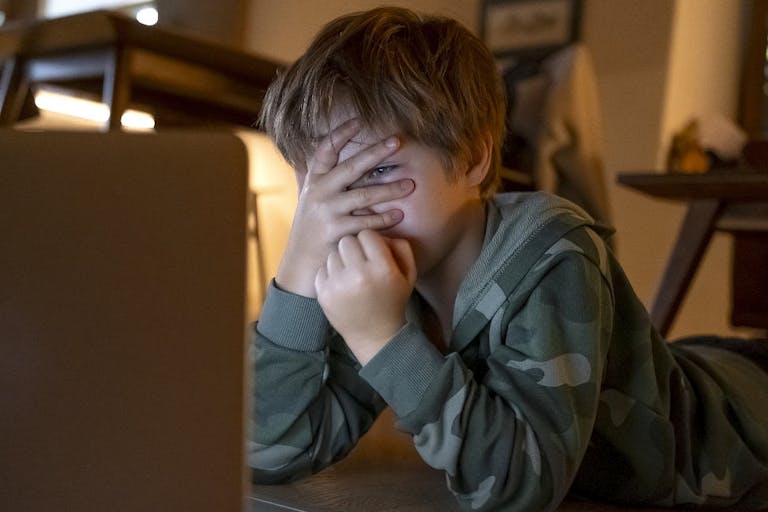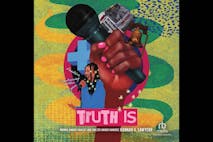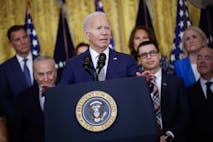
‘Miracle Baby’: Couple welcomes baby girl via restorative reproductive medicine
Isabella Childs
·
One of top US sex ed leaders is unhappy that states can now protect kids from porn
The Sexuality Information and Education Council of the United States (SIECUS), part of a coalition that sets sex education standards for minors, is upset about a recent U.S. Supreme Court decision that allows states to limit minors’ access to online pornography.
SIECUS’s outrage over safeguards meant to prevent children’s access to pornography appears to stem from fears that its favored sexually graphic sex-ed curricula could be blocked. This tacit admission as to the sexually explicit nature of these curricula should serve as a stark wake-up call for every parent.
One of the country’s leading sex education groups for minors is speaking against a U.S. Supreme Court decision allowing states to require age verification to access pornography — and prevent minors from viewing.
The group worries that restricting pornographic materials may threaten its ability to distribute its sexually graphic materials to children in school libraries and classrooms.
The removal of sexually explicit, age-inappropriate material from sex education and other classroom instruction is not “book banning.” It is protecting minors from harmful content that affects their development — content that was created based on the pedophilic Kinseyan idea that children are “sexual from birth.”
In a statement sent to supporters via e-mail, SIECUS president and CEO Christine Soyong Harley stated that the Supreme Court’s recent ruling in Free Speech Coalition v. Paxton “does more than regulate adult access to online content; it opens the floodgates to censoring of sex education and LGBTQIA+ affirming materials” (emphasis added).
SIECUS, Planned Parenthood, and other members of the Future of Sex Education (FoSE) Coalition promote sexually explicit material in their sex-ed curricula as “educational.” This is evident from SIECUS’ claim that the Supreme Court decision “could have broad implications for other content online that some may claim is ‘sexually obscene’ solely for discussing sexual and reproductive health topics — such as sex education content.”
At the same time, both SIECUS and Planned Parenthood have framed prenatal development education bills as an attack on so-called “comprehensive” sex education and have claimed that including prenatal development as part of sex education is “religious ideology” and “Christian indoctrination.”
They warn that showing students the developing child in the womb (which, of course, results from male/female sexual intercourse) could “reinforce abortion stigma” — though neither the curriculum requirements nor approved videos for potential use make any mention of abortion. They simply show what happens during human prenatal development.
In a March 2024 “If/Then Online Censorship” statement, SIECUS claims that due to a lack of sex education aligning with National Sex Education Standards (NSES) and created by SIECUS and other members of the FoSE coalition, children turn to social media, books, and other online sources for information. SIECUS goes on to quote the American Library Association: “While pornography and sex education are very different, this decision is a departure from unrestricted access to First Amendment protected material online.”
These and other groups maintain the propagandistic idea that restricting youth from viewing age-inappropriate, pornographic material is akin to “book banning.”
The sad reality is that the sexually explicit “sex education” curricula, websites, and books promulgated by SIECUS, the American Library Association, and the FoSE coalition are, in many ways, pornographic — as Live Action News has shown by exposing some of the materials. They are purchased with taxpayer funds and sit on the book shelves of school libraries across the country and are often even integrated into core subjects far outside the realm of “sex education” or health class — a controversy also addressed by the U.S. Supreme Court in the recent decision of Mahmoud v. Taylor.
Earlier this month, the U.S. Supreme Court upheld a Texas law which aimed to protect minors by requiring age verification to access pornography in the case of Free Speech Coalition v. Paxton.
The Texas statute was enacted in 2023 with the passage of House Bill 1181, which applied to “any commercial entity that knowingly and intentionally publishes or distributes material on an Internet website… more than one-third of which is sexual material harmful to minors.” The statute defines “sexual material harmful to minors” as that which:
(1) “is designed to appeal to or pander to the prurient interest” when taken “as a whole and with respect to minors”; (2) describes, displays, or depicts “in a manner patently offensive with respect to minors” various sex acts and portions of the human anatomy, including depictions of “sexual intercourse, masturbation, sodomy, bestiality, oral copulation, flagellation, [and] excretory functions”; and (3) “lacks serious literary artistic, political, or scientific value for minors.”
Justice Clarence Thomas wrote the majority opinion, stating, “The power to require age verification is within a State’s authority to prevent children from accessing sexually explicit content,” adding that “H.B. 1181 is a constitutionally permissible exercise of that authority.”
In reaction to the Supreme Court’s decision, mother of four school-aged children and Texas State Representative Hillary Hickland told Live Action News:
I am very pleased to see the Supreme Court support the efforts of the state of Texas to protect kids and empower parents with their God-given right to raise their own children.
This ruling affirms our ability to enact common-sense protections – like third-party age verification for adult websites – that reinforce a parent’s right to consent to what their children are exposed to, both online and in schools.
It is telling that U.S. sex education leaders are outraged that children will have more difficulty accessing pornography.
The sexualization of children and their indoctrination with the abortion-minded and LGBTQIA+-ideology of Planned Parenthood, SIECUS, and Advocates for youth continues to be the goal of these groups.
The more children that are exposed and groomed with this sexually explicit material, the more future clients the abortion industry creates.
Live Action News has reported on Planned Parenthood’s and Advocates for Youth’s extreme, hyper-sexualized curricula passed off as “sex education,” which portrays children as “sexual from birth.” This is the same ideology promoted by the likes of Alfred Kinsey, the “father of the sexual revolution,” who gleaned his information from actual pedophiles who recorded “data” for Kinsey during their acts of molestation and rape against children — including infants.
Even clear reactions of distress, fear, and pain were recorded as sexual responses.
This “research” involving child rape then became the basis for all modern comprehensive sex education for children.
Parents should be aware of this.
The leading sex miseducators are very concerned that they maintain continued access to taxpayer funds.
Recently, Live Action News reported that California received warnings to comply with the removal of all references to gender ideology in curricula used for the state’s Personal Responsibility Education Program (PREP). In addition, earlier this month, the Office of the Assistant Secretary for Health (OASH) issued a notice with updates and clarifications for its grant recipients in the Teen Pregnancy Prevention Program (TPPP), which is also under the umbrella for federal adolescent pregnancy prevention programs.
Since the 1980s, TPPP has been part of a larger continued effort by Congress to utilize Health and Human Services (HHS) to administer funding for “programs with a focus on adolescent pregnancy prevention.” The initial establishment and funding for TPPP began under the Obama administration and required that most grants allocated for TPPP must “use evidence-based education models that have been shown to be effective in reducing adolescent pregnancy and related risk behaviors.”
However, the effectiveness of TPPP at actually preventing teen sexual activity or pregnancy over the years has not been proven.
OASH’s recent program policy notice states that “Federal funds may not be used to indoctrinate America’s children with radical ideologies or other inappropriate material,” adding that TPPP’s “core mission” is:
… to reduce teen pregnancy through medically accurate and age-appropriate programming, not to promote harmful ideologies, risky sexual activity for minors, or other content outside the scope of the program.
Program materials are expected [sic] reflect the immutable biological reality of sex, not radical gender ideology, and may not promote anti-American ideologies such as discriminatory equity ideology.
Programs with such unauthorized content are not eligible for federal funding.
Citing the recent Supreme Court decision in Mahmoud v. Taylor, the policy notice further expanded that curriculum which includes “other content that is not related to, or counter to the aim of, reducing teen pregnancy, such as content that encourages, normalizes, or promotes sexual activity for minors, including anal and oral sex, or masturbation, including through sexually themed roleplay” doesn’t meet the standards (emphasis added).
The OASH notice added that “This also may include content on the eroticization of birth control methods, creating more pleasurable sexual experiences, or foreplay techniques.” (emphasis added)
Planned Parenthood’s and Advocates for Youth’s graphic, sexualized curricula tend to focus on these aforementioned subjects.
While the defunding of Planned Parenthood and other abortion providers through Medicaid payments may temporarily cease, the abortion corporation could also lose additional funding if OASH’s clarified policies regarding the TPPP are enforced similarly to the PREP program — which is likely why Planned Parenthood has filed suit against HHS.
According to the Health and Human Services Tracking Accountability in Government Grants System (TAGGS), over $1.1B has been allocated through cooperative agreements since Fiscal Year (FY) 2008 by OASH under the TPPP Program — with nine Planned Parenthood locations across seven states receiving more than $63.6M in grant awards since FY 2013.
One thing is clear: there is a lot of money to be made by the abortion industry, not only from the death of innocent preborn children in the womb, but also from the intentional degradation of the minds and morals of the country’s youth.
The taxpayer-funded destruction of the future of our nation at the hands of Planned Parenthood and the FoSE coalition must come to an end.
Follow Live Action News on Facebook and Instagram for more pro-life news.
Live Action News is pro-life news and commentary from a pro-life perspective.
Contact editor@liveaction.org for questions, corrections, or if you are seeking permission to reprint any Live Action News content.
Guest Articles: To submit a guest article to Live Action News, email editor@liveaction.org with an attached Word document of 800-1000 words. Please also attach any photos relevant to your submission if applicable. If your submission is accepted for publication, you will be notified within three weeks. Guest articles are not compensated (see our Open License Agreement). Thank you for your interest in Live Action News!

Isabella Childs
·
Analysis
Nancy Flanders
·
Newsbreak
Angeline Tan
·
Human Interest
Nancy Flanders
·
Issues
Nancy Flanders
·
Pop Culture
Cassy Cooke
·
Human Interest
Sheena Rodriguez
·
Issues
Sheena Rodriguez
·
Issues
Sheena Rodriguez
·
Issues
Sheena Rodriguez
·
Politics
Sheena Rodriguez
·